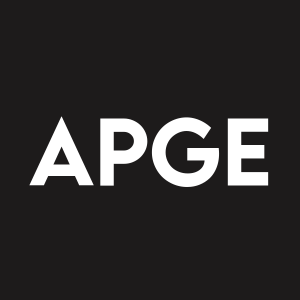Apogee Therapeutics Provides Pipeline Progress and Reports Second Quarter 2024 Financial Results
Rhea-AI Summary
Apogee Therapeutics (Nasdaq: APGE) reported pipeline progress and Q2 2024 financial results. Key highlights include:
1. Advancement of APG777 with Phase 2 Part A data expected in 2H 2025
2. APG808 interim Phase 1 data due in Q4 2024
3. APG990 Phase 1 trial initiation accelerated to Q3 2024
4. Addition of APG333, targeting TSLP, to enter clinic in 2025
5. Planned combination studies of APG777+APG990 and APG777+APG333
Financial position: $790 million in cash, cash equivalents, and marketable securities, providing runway into 2028. Q2 2024 R&D expenses were $33.2 million, G&A expenses $10.9 million, and net loss $33.8 million.
Positive
- Pipeline advancement with multiple clinical milestones expected between 2024-2025
- Addition of APG333 to portfolio, expanding potential combination therapies
- Strong cash position of $790 million, providing runway into 2028
- Accelerated initiation of APG990 Phase 1 trial to Q3 2024
- Planned combination studies potentially offering improved efficacy and dosing
Negative
- Increased net loss of $33.8 million in Q2 2024 compared to $18.9 million in Q2 2023
- Higher R&D expenses of $33.2 million in Q2 2024 vs $13.9 million in Q2 2023
- Increased G&A expenses of $10.9 million in Q2 2024 compared to $4.9 million in Q2 2023
Insights
Apogee Therapeutics' Q2 2024 results show a robust financial position with
Apogee's pipeline progress is noteworthy, with several promising candidates targeting key inflammatory pathways. The advancement of APG777 (IL-13 inhibitor) to Phase 2 for atopic dermatitis is significant, with data expected in 2H 2025. The accelerated timeline for APG990 (OX40L inhibitor) entering Phase 1 in Q3 2024 is encouraging. The addition of APG333 (TSLP inhibitor) broadens their portfolio in respiratory indications. Most intriguingly, Apogee's combination strategy, particularly APG777 + APG990 and APG777 + APG333, could potentially offer superior efficacy across multiple inflammatory conditions. This multi-pronged approach targeting various inflammatory pathways (IL-13, OX40L, TSLP) demonstrates a sophisticated understanding of complex immunology and could position Apogee as a leader in next-generation inflammatory disease treatments.
Apogee's focus on developing biologics with differentiated efficacy and dosing in major inflammatory and immunology markets is strategically sound. The company is targeting high-value indications like atopic dermatitis, asthma and COPD, which represent significant market opportunities. The emphasis on combination therapies and extended half-life formulations could provide a competitive edge, potentially improving patient compliance and outcomes. However, these markets are highly competitive with established players. Apogee's success will depend on demonstrating superior efficacy or convenience in clinical trials. The company's robust pipeline and focus on multiple mechanisms (IL-13, IL-4Rα, OX40L, TSLP) provide multiple shots on goal, potentially mitigating risk. Upcoming clinical milestones, particularly for APG777 and APG990, will be critical in validating Apogee's approach and could significantly impact investor sentiment.
Continued advancement of pipeline and execution towards expected milestones, including APG777 16-week proof-of-concept data from the Phase 2 Part A trial in 2H 2025, APG808 interim Phase 1 data in 4Q 2024, and APG990 Phase 1 trial initiation in healthy volunteers accelerated to 3Q 2024
APG333, a novel subcutaneous half-life extended anti-TSLP antibody, added to portfolio to provide for potential best-in-class combination efficacy across multiple respiratory indications, expected to enter the clinic in 2025
Apogee plans combination studies of 777 + 990 (IL-13 and OX40L) and 777 + 333 (IL-13 and TSLP), with the potential for greater efficacy across I&I diseases, starting with the first clinical trial of the APG777 and APG990 combination in 2025
SAN FRANCISCO and WALTHAM, Mass., Aug. 12, 2024 (GLOBE NEWSWIRE) -- Apogee Therapeutics, Inc. (Nasdaq: APGE), a clinical-stage biotechnology company advancing novel biologics with potential for differentiated efficacy and dosing in the largest inflammatory and immunology (I&I) markets, including for the treatment of atopic dermatitis (AD), asthma, chronic obstructive pulmonary disease (COPD) and other I&I indications, today reported pipeline highlights and second quarter financial results.
“The first half of this year has been marked with significant pipeline progress and a focus on further defining our strategy that will enable us to deliver on our goal of reshaping the standard of care for patients in I&I by developing treatments with potential best-in-class monotherapy and combination efficacy and improved dosing schedules,” said Michael Henderson, M.D., Chief Executive Officer of Apogee. “A key component of that strategy is combining several of our pipeline programs, including APG333, which is our newly added compound targeting TSLP. TSLP is a validated target with one compound approved for asthma without a biomarker requirement, and which has recent clinical data demonstrating potential for treatment of a broader respiratory disease population, including COPD. We have strategically built a unique portfolio of IL-13, IL-4Rα, OX40L and TLSP inhibitors that enable multiple combinations in dermatology and respiratory diseases with the potential for deeper and broader responses. With our continued execution of the pipeline, our expected milestones are on track and we have a strong cash position taking us into 2028. We look forward to discussing our programs and additional plans for combination approaches in further detail at our R&D Day in December this year.”
Pipeline and Corporate Highlights and Upcoming Milestones
- First patient dosed in APG777 Phase 2 trial and on track for Part A data in 2H 2025: APG777 is a novel, subcutaneous (SQ) extended half-life monoclonal antibody (mAb) targeting IL-13 – a critical cytokine in inflammation and a primary driver of AD.
- In May, the company commenced dosing in the Phase 2 clinical trial of APG777 in patients with moderate-to-severe AD; 16-week proof-of-concept induction data from Part A of the trial are expected in the second half of 2025.
- The trial is designed to combine the typical Phase 2a and 2b portions of a clinical trial into a single protocol. The primary endpoint of each part of the study is mean percentage change in EASI score from baseline to Week 16.
- The Phase 2 APG777 trial in asthma is expected to include APG777 as a monotherapy and APG777 in combination with APG333, combining IL-13 and TSLP inhibition, pending Phase 1 clinical trial data from APG333.
- Phase 1 APG990 HV clinical trial set to start ahead of schedule in 3Q 2024: APG990 is a novel, SQ half-life extended mAb targeting OX40L, initially being developed for AD. OX40L is located further upstream in the inflammatory pathway than IL-13 or IL-4Rα and targeting it could have broader impact on the inflammatory cascade by inhibiting Type 1, Type 2 and Type 3 pathways. With current approved biologics only targeting two mechanisms of action (IL-13 and IL4Rα) in AD, OX40L could represent another therapeutic option for patients, especially the portion of patients who do not benefit from currently available treatments. In addition, based on our preclinical studies, we believe APG990 can be dosed every three to six months in maintenance, which, if our clinical trials are successful, would represent a significant improvement compared to first generation OX40L antibodies that are expected to be dosed every four to twelve weeks.
- The company has received regulatory clearance in Australia and plans to initiate a Phase 1 APG990 clinical trial in HVs in the third quarter of 2024 with interim data expected in 2025.
- Phase 1 APG808 trial on track for 4Q 2024 interim data readout: APG808 is a SQ extended half-life mAb targeting IL-4Rα, a target with clinical validation across eight Type 2 allergic diseases. APG808 has similar binding affinity for IL-4Rα as a first generation mAb, DUPIXENT, and has demonstrated similar inhibition to DUPIXENT across three in vitro assays that measure downstream functional inhibition of the IL-13/IL-4 pathway (pSTAT6 induction, inhibition of TF-1 proliferation, and inhibition of TARC secretion).
- APG333, a novel SQ half-life extended anti-TSLP antibody, added to portfolio earlier in the year, with supporting third-party evidence of broad potential of target inhibition in asthma and COPD: APG333 is a fully-human mAb targeting thymic stromal lymphopoietin (TSLP). TSLP is an epithelial cell-derived cytokine that has emerged as an attractive validated target for the treatment of I&I indications, with the potential to be used in combination with other mAbs for potentially greater efficacy in broader populations. TSLP plays important roles in Type 2 and Type 3 inflammation, particularly in both eosinophilic and non-eosinophilic inflammation. TSLP inhibition has been clinically validated, with one approved product on the market for the treatment of severe asthma without biomarker or phenotype restrictions. Based on its mechanism, TSLP inhibition could offer treatment to the approximately
40% of severe asthma patients with low Type 2 inflammation.- The company plans to nominate a development candidate by the end of 2024 and initiate a Phase 1 APG333 clinical trial in healthy volunteers (HV) in 2025.
- Pending Phase 1 data, the company has the opportunity to combine APG333 with APG777, combining IL-13 and TSLP inhibition, to drive potential best-in-class efficacy in respiratory indications.
- Potential to expand patient reach with best-in-class efficacy and dosing with planned APG777 and APG990 combination approach, combining IL-13 and OX40L inhibition: Apogee plans to develop APG777 and APG990 together as a potential first-in-class coformulation combining deep and sustained inhibition of Type 2 inflammation via APG777’s inhibition of IL-13 with broader inhibition of Type 1-3 inflammation through APG990’s inhibition of OX40L. These combined mechanisms offer the potential for improved clinical responses over monotherapy across a variety of I&I diseases while our approach of coformulating two extended half-life mAbs holds the potential for best-in-class dosing.
- The company plans to initiate the first clinical trial of the APG777 and APG990 combination in 2025.
- Expanded board of directors: In May, drug development expert Lisa Bollinger, M.D., joined Apogee’s board of directors. Dr. Bollinger has over 30 years of experience in drug development, with deep regulatory experience gained within both the U.S. FDA and multinational biotechnology and pharmaceutical companies, and most recently served as Vice President, Regulatory Affairs, Global Regulatory Affairs and Clinical Safety at Merck, where she led the general medicine therapeutic area in regulatory affairs.
- Apogee Therapeutics 2024 Virtual R&D Day to be held in December: The company plans to highlight progress across its pipeline and showcase its path to reshaping the standard of care in I&I by bringing forward monotherapy and combination treatments that offer the potential for best-in-class efficacy and improved dosing.
Second Quarter Financial Results
- Cash Position: As of June 30, 2024, Apogee had cash, cash equivalents and marketable securities of
$789.6 million . Apogee expects that its existing cash will enable it to fund its current operating expenses into the first quarter of 2028.
- Research & Development (R&D) Expenses: R&D expenses for the second quarter of 2024 were
$33.2 million , compared to$13.9 million for the second quarter of 2023. R&D expenses increased primarily due to further development of the company’s APG777, APG808 and APG990 and APG333 programs and advancement of its pipeline into clinical trials, preclinical testing of potential combinations, as well as increases in personnel costs, including equity-based compensation expense, associated with the growth of its R&D team.
- General and Administrative (G&A) Expenses: G&A expenses for the second quarter of 2024 were
$10.9 million , compared to$4.9 million for the second quarter of 2023. G&A expenses increased primarily due to increases in personnel costs, including equity-based compensation, associated with the growth of the company’s G&A team, as well as increased costs related to being a public company, including for legal, IT and professional services, and to support the growth of the business.
- Net Loss: Net loss for the second quarter of 2024 was
$33.8 million , compared to the net loss for the second quarter of 2023 which was$18.9 million . Net loss increased primarily as a result of higher R&D and G&A expenses as described above, partially offset by higher interest income.
About Apogee
Apogee Therapeutics is a clinical-stage biotechnology company advancing novel biologics with potential for differentiated efficacy and dosing in the largest inflammatory and immunology (I&I) markets, including for the treatment of atopic dermatitis (AD), asthma, chronic obstructive pulmonary disease (COPD) and other I&I indications. Apogee’s antibody programs are designed to overcome limitations of existing therapies by targeting well-established mechanisms of action and incorporating advanced antibody engineering to optimize half-life and other properties. APG777, the company’s most advanced program, is being initially developed for the treatment of AD, which is the largest and one of the least penetrated I&I markets. With four validated targets in its portfolio, Apogee is seeking to achieve best in class efficacy and dosing through monotherapies and combinations of its novel antibodies. Based on a broad pipeline and depth of expertise, the company believes it can deliver value and meaningful benefit to patients underserved by today’s standard of care. For more information, please visit www.apogeetherapeutics.com.
Forward Looking Statements
Certain statements in this press release may constitute “forward-looking statements” within the meaning of the federal securities laws, including, but not limited to, statements regarding: Apogee’s plans for its current and future product candidates and programs, its plans for current and future clinical trials, including a Phase 2 trial for APG777 in asthma, a Phase 1b trial of APG808 in asthma, a Phase 1 trial for APG990, and a Phase 1 trial for APG333; Apogee’s plans for clinical trial design; the anticipated timing of the initiation of and results from Apogee’s clinical trials, including data from Apogee’s Phase 2 trial of APG777 and Apogee’s Phase 1 trial of APG808; the potential clinical benefit and half-life of APG777, APG808, APG990, APG333 and any other potential programs, including combination therapies; Apogee’s expected timing for future pipeline updates; and expectations regarding the time period over which Apogee’s capital resources will be sufficient to fund Apogee’s anticipated operations. Words such as “may,” “might,” “will,” “objective,” “intend,” “should,” “could,” “can,” “would,” “expect,” “believe,” “design,” “estimate,” “predict,” “potential,” “develop,” “plan” or the negative of these terms, and similar expressions, or statements regarding intent, belief, or current expectations, are forward-looking statements. While Apogee believes these forward-looking statements are reasonable, undue reliance should not be placed on any such forward-looking statements, which are based on information available to the company on the date of this release. These forward-looking statements are based upon current estimates and assumptions and are subject to various risks and uncertainties (including, without limitation, those set forth in Apogee’s filings with the U.S. Securities and Exchange Commission (the SEC)), many of which are beyond the company’s control and subject to change. Actual results could be materially different. Risks and uncertainties include: global macroeconomic conditions and related volatility, expectations regarding the initiation, progress, and expected results of Apogee’s preclinical studies, clinical trials and research and development programs; expectations regarding the timing, completion and outcome of Apogee’s clinical trials; the unpredictable relationship between preclinical study results and clinical study results; the timing or likelihood of regulatory filings and approvals; liquidity and capital resources; and other risks and uncertainties identified in Apogee’s Annual Report on Form 10-K for the year ended December 31, 2023, filed with the SEC on March 5, 2024, Quarterly Report on 10-Q for the quarterly period ended March 31, 2024, filed with the SEC on May 13, 2024, and subsequent disclosure documents we may file with the SEC. Apogee claims the protection of the Safe Harbor contained in the Private Securities Litigation Reform Act of 1995 for forward-looking statements. Apogee expressly disclaims any obligation to update or alter any statements whether as a result of new information, future events or otherwise, except as required by law.
| APOGEE THERAPEUTICS, INC. CONDENSED CONSOLIDATED BALANCE SHEETS (UNAUDITED) (In thousands, except unit/share data) | |||||||
| JUNE 30, 2024 | DECEMBER 31, 2023 | ||||||
| Assets | |||||||
| Current assets: | |||||||
| Cash and cash equivalents | $ | 307,299 | $ | 118,316 | |||
| Marketable securities | 368,929 | 277,143 | |||||
| Prepaid expenses and other current assets | 5,625 | 2,950 | |||||
| Total current assets | 681,853 | 398,409 | |||||
| Long-term marketable securities | 113,395 | — | |||||
| Property and equipment, net | 714 | 377 | |||||
| Right-of-use asset, net | 4,227 | 2,217 | |||||
| Other non-current assets | 468 | 401 | |||||
| Total assets | $ | 800,657 | $ | 401,404 | |||
| Liabilities and stockholders' equity | |||||||
| Current liabilities: | |||||||
| Accounts payable | $ | 5,527 | $ | 2,143 | |||
| Lease liability | 1,682 | 1,101 | |||||
| Accrued expenses | 17,408 | 17,314 | |||||
| Total current liabilities | 24,617 | 20,558 | |||||
| Long-term liabilities: | |||||||
| Lease liability, net of current | 2,401 | 933 | |||||
| Total liabilities | 27,018 | 21,491 | |||||
| Commitments and contingencies (Note 9) | |||||||
| Stockholders' equity: | |||||||
| Common Stock; | 1 | — | |||||
| Additional paid-in capital | 963,607 | 503,354 | |||||
| Accumulated other comprehensive (loss) income | (289 | ) | 329 | ||||
| Accumulated deficit | (189,680 | ) | (123,770 | ) | |||
| Total stockholders’ equity | 773,639 | 379,913 | |||||
| Total liabilities and stockholders’ equity | $ | 800,657 | $ | 401,404 | |||
| APOGEE THERAPEUTICS, INC. CONDENSED CONSOLIDATED STATEMENT OF OPERATIONS (UNAUDITED) | |||||||||||||||
| THREE MONTHS ENDED JUNE 30, | SIX MONTHS ENDED JUNE 30, | ||||||||||||||
| 2024 | 2023 | 2024 | 2023 | ||||||||||||
| Operating expenses: | |||||||||||||||
| Research and development | $ | 33,206 | $ | 13,946 | $ | 61,922 | $ | 22,401 | |||||||
| General and administrative | 10,916 | 4,939 | 20,381 | 9,142 | |||||||||||
| Total operating expenses | 44,122 | 18,885 | 82,303 | 31,543 | |||||||||||
| Loss from operations | (44,122 | ) | (18,885 | ) | (82,303 | ) | (31,543 | ) | |||||||
| Other income, net: | |||||||||||||||
| Interest income, net | 10,306 | — | 16,393 | 133 | |||||||||||
| Total other income, net | 10,306 | — | 16,393 | 133 | |||||||||||
| Net loss | $ | (33,816 | ) | $ | (18,885 | ) | $ | (65,910 | ) | $ | (31,410 | ) | |||
Investor Contact:
Noel Kurdi
VP, Investor Relations
Apogee Therapeutics, Inc.
Noel.Kurdi@apogeetherapeutics.com
Media Contact:
Dan Budwick
1AB Media
dan@1abmedia.com









